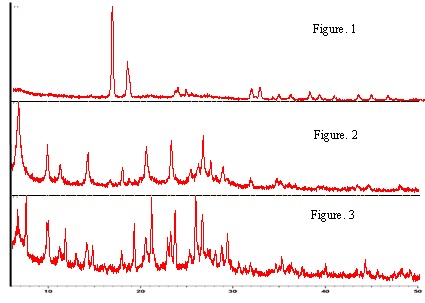Synthesis of Zeolite-A From Oil Palm Shell Ash for Ferrous Metal Adsorption in Borehole Water
Abstract
Research has been conducted to adsorb Fe (III) ions in borehole water from Haruru Village, Central Maluku District, and artificial wastewater using A-type zeolite synthesized from oil palm shell ash. The oil palm shell ash was chemically activated by washing with 2 M HCl, serving as a source of SiO2. The synthesized zeolite A underwent characterization using X-ray diffraction (XRD) to determine its crystallinity. Batch adsorption of Fe (III) ions using zeolite A in borehole water and artificial wastewater was performed, involving variations in contact time and adsorbed iron concentration, and was analyzed using atomic absorption spectroscopy. The XRD analysis results indicated that the peaks of zeolite A were more pronounced at a NaOH mass of 93.75 grams, totaling ten peaks. The analysis of the initial concentration of Fe (III) ions in borehole water was 1.2151 ppm, while in artificial wastewater, it was 2.00 ppm. The optimum capacity and efficiency of zeolite A for Fe (III) ions in borehole water from Haruru Village were observed at a contact time of 40 minutes, with a capacity value of 0.1558 mg/g and an efficiency of 10.26%.
Downloads

Copyright (c) 2024 Fricha Febriani Paula Koloay, Sunarti Sunarti, Julita Beatrik Manuhutu

This work is licensed under a Creative Commons Attribution-NonCommercial-NoDerivatives 4.0 International License.
Authors who publish with this journal agree to the following terms:
- Copyright on any article is retained by the author(s).
- The author grants the journal, the right of first publication with the work simultaneously licensed under a Creative Commons Attribution License that allows others to share the work with an acknowledgment of the work’s authorship and initial publication in this journal.
- Authors are able to enter into separate, additional contractual arrangements for the non-exclusive distribution of the journal’s published version of the work (e.g., post it to an institutional repository or publish it in a book), with an acknowledgment of its initial publication in this journal.
- Authors are permitted and encouraged to post their work online (e.g., in institutional repositories or on their website) prior to and during the submission process, as it can lead to productive exchanges, as well as earlier and greater citation of published work.
- The article and any associated published material is distributed under the Creative Commons Attribution-NonCommercial-NoDerivatives 4.0 International License.





_copy1.png)










